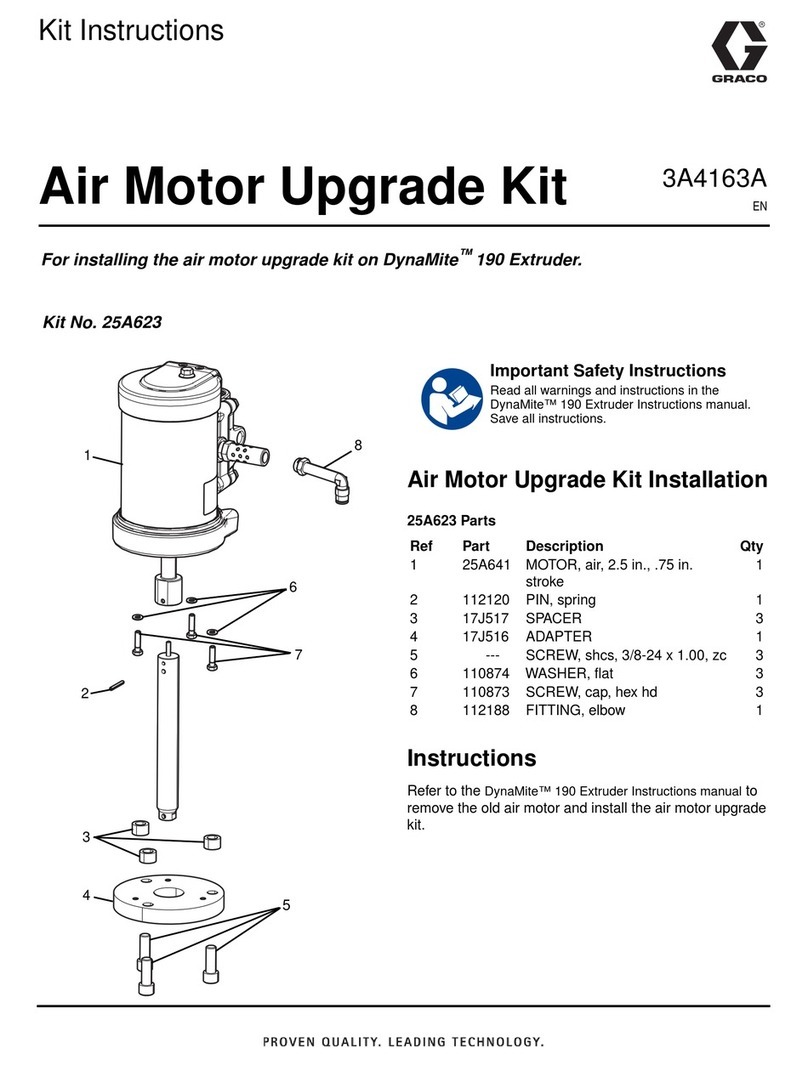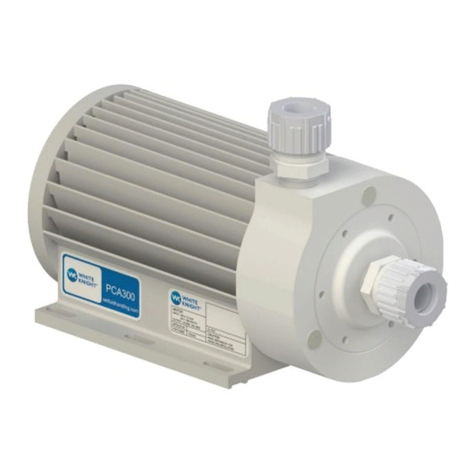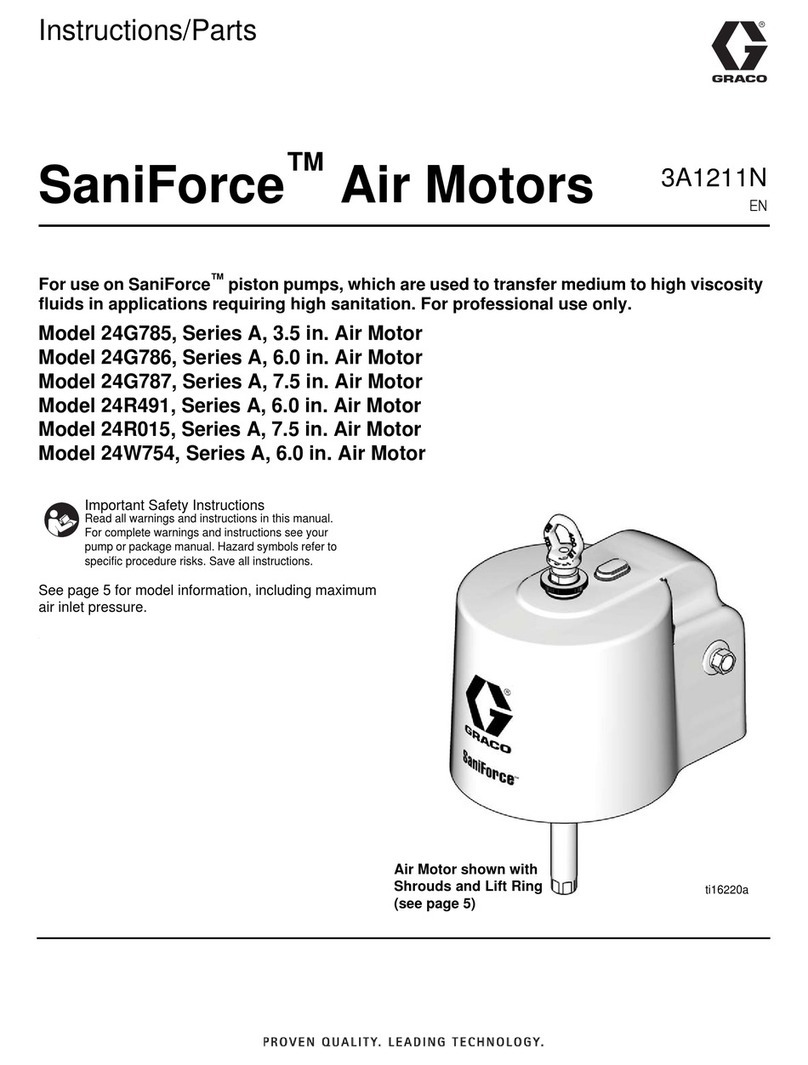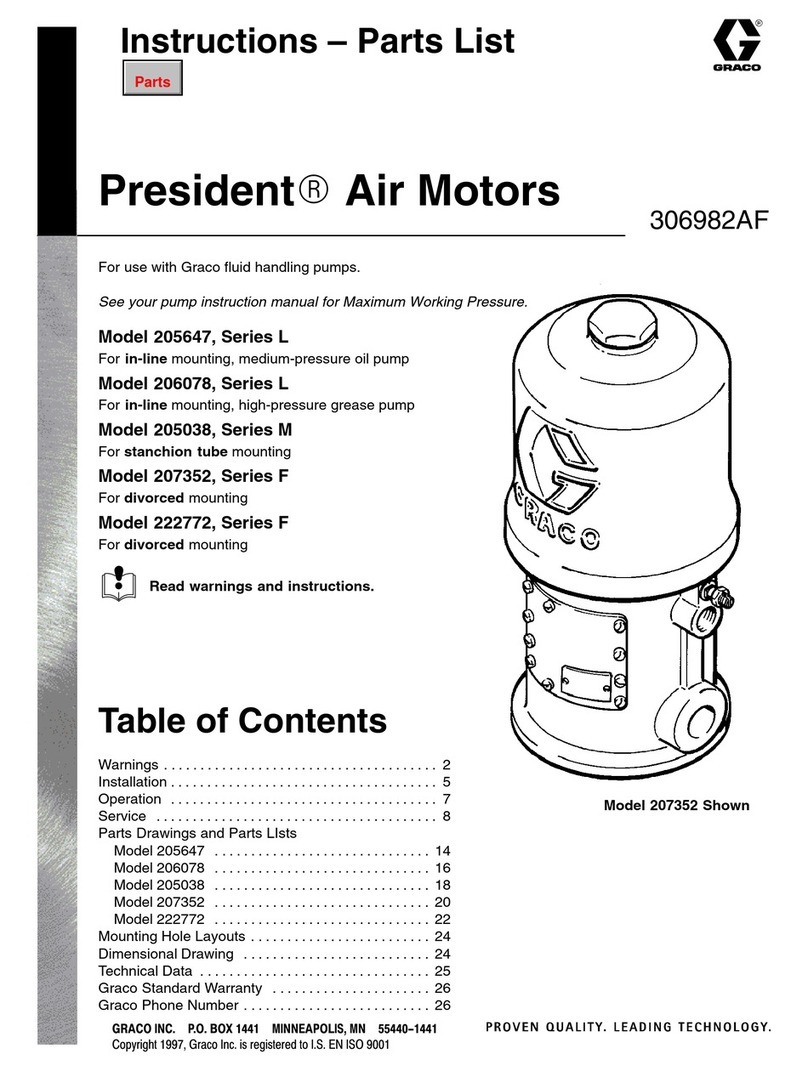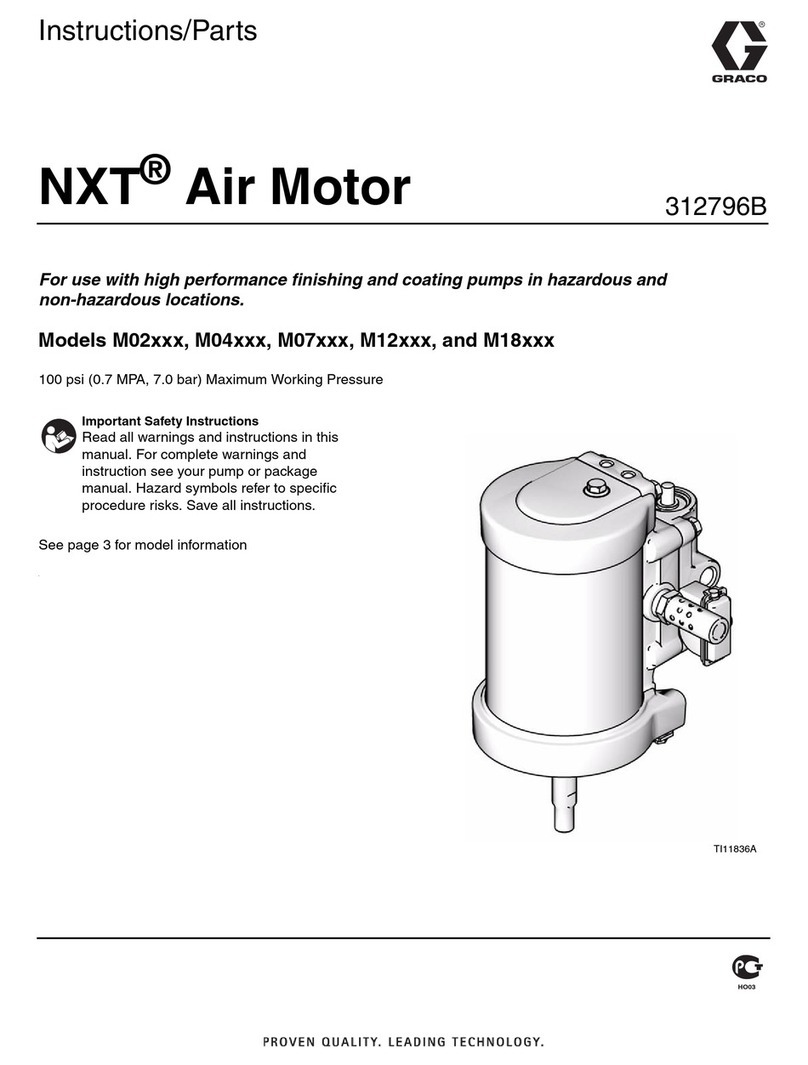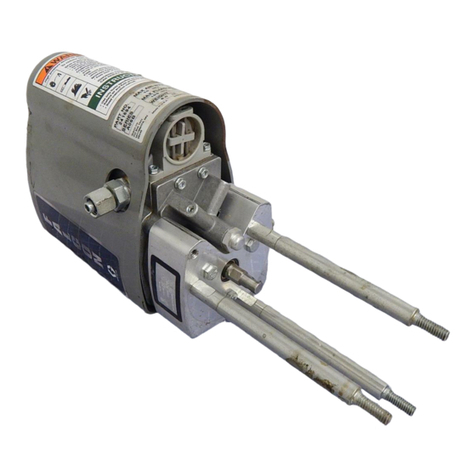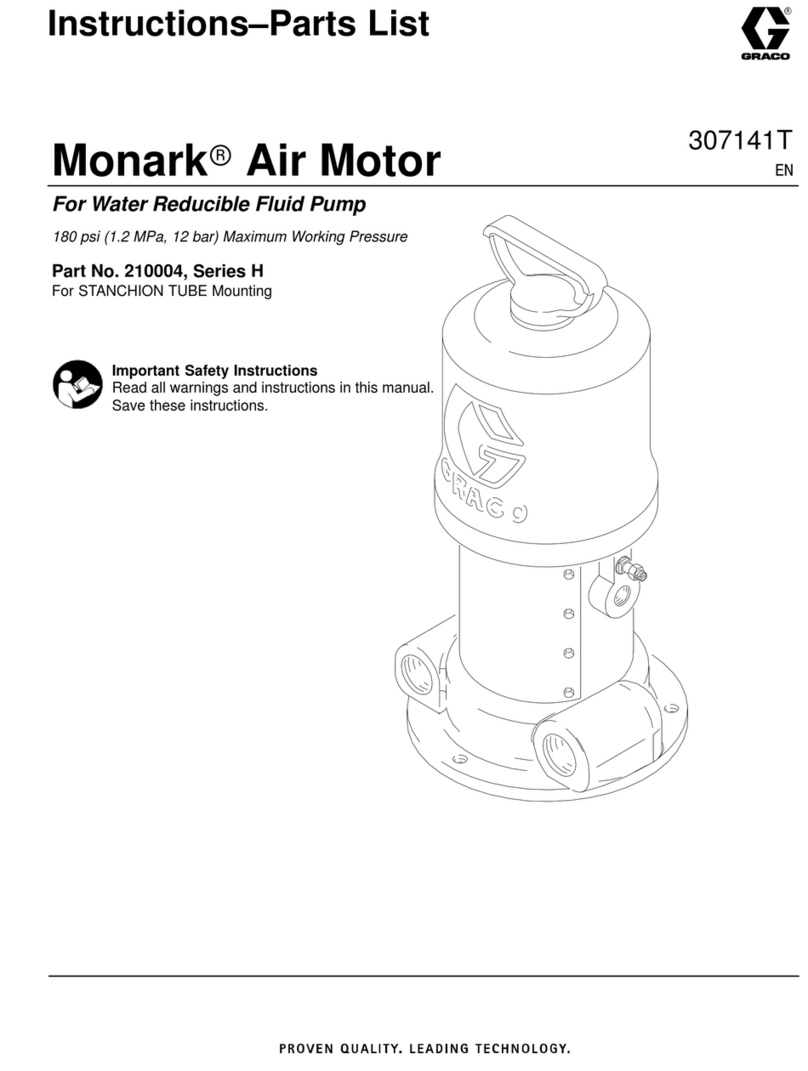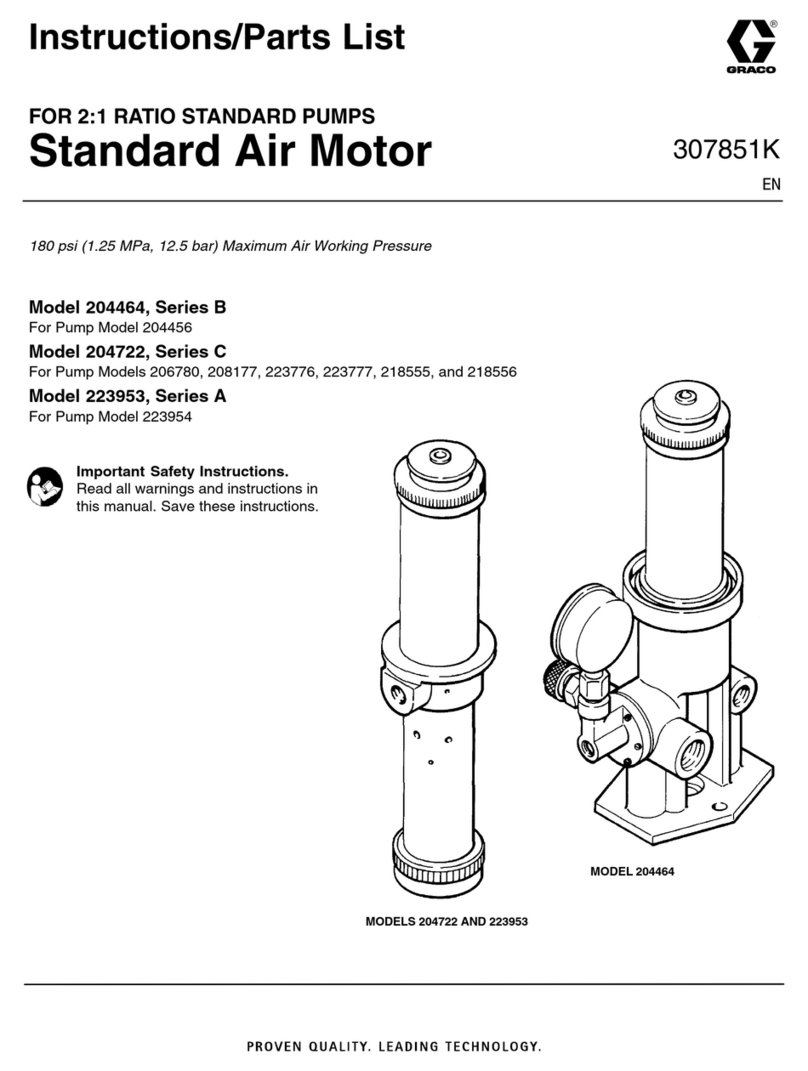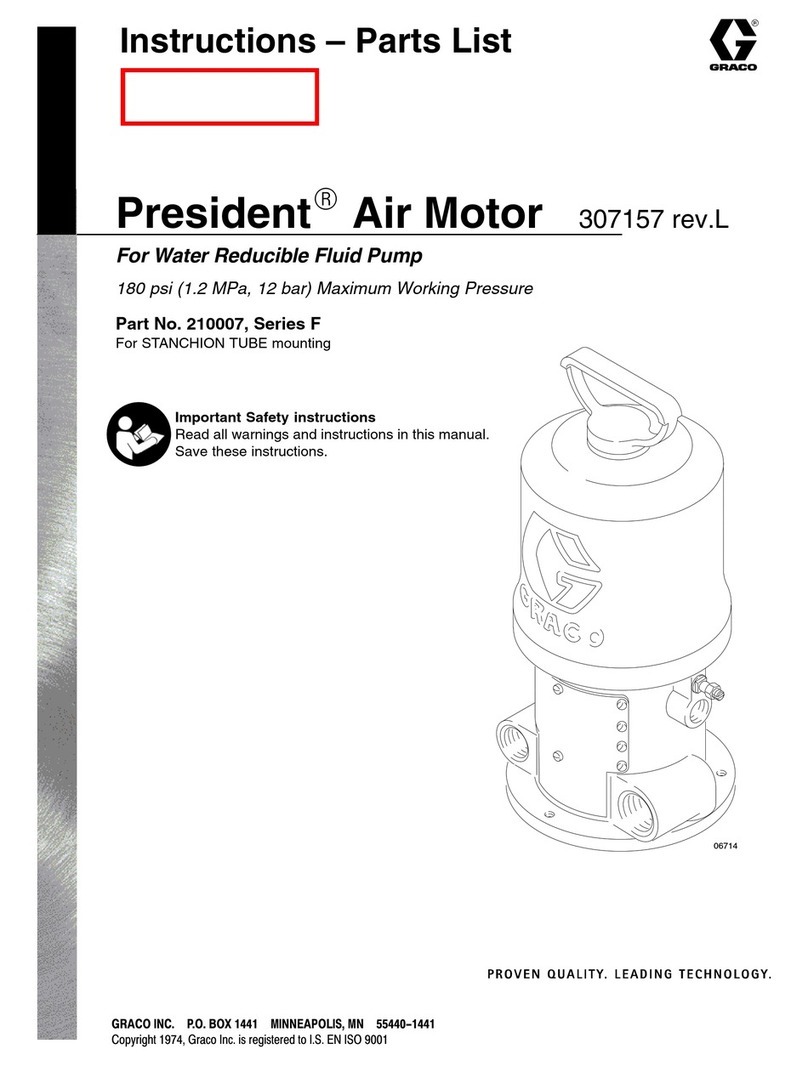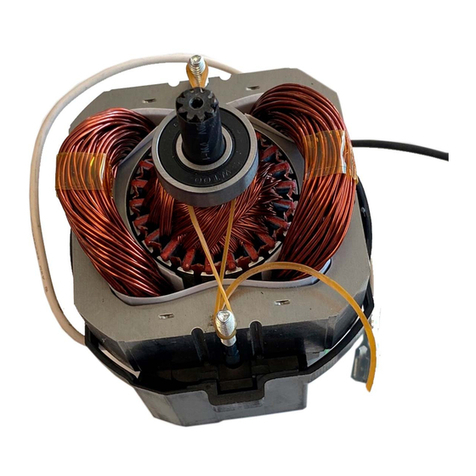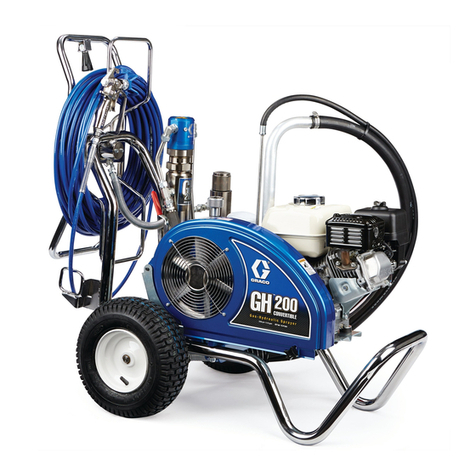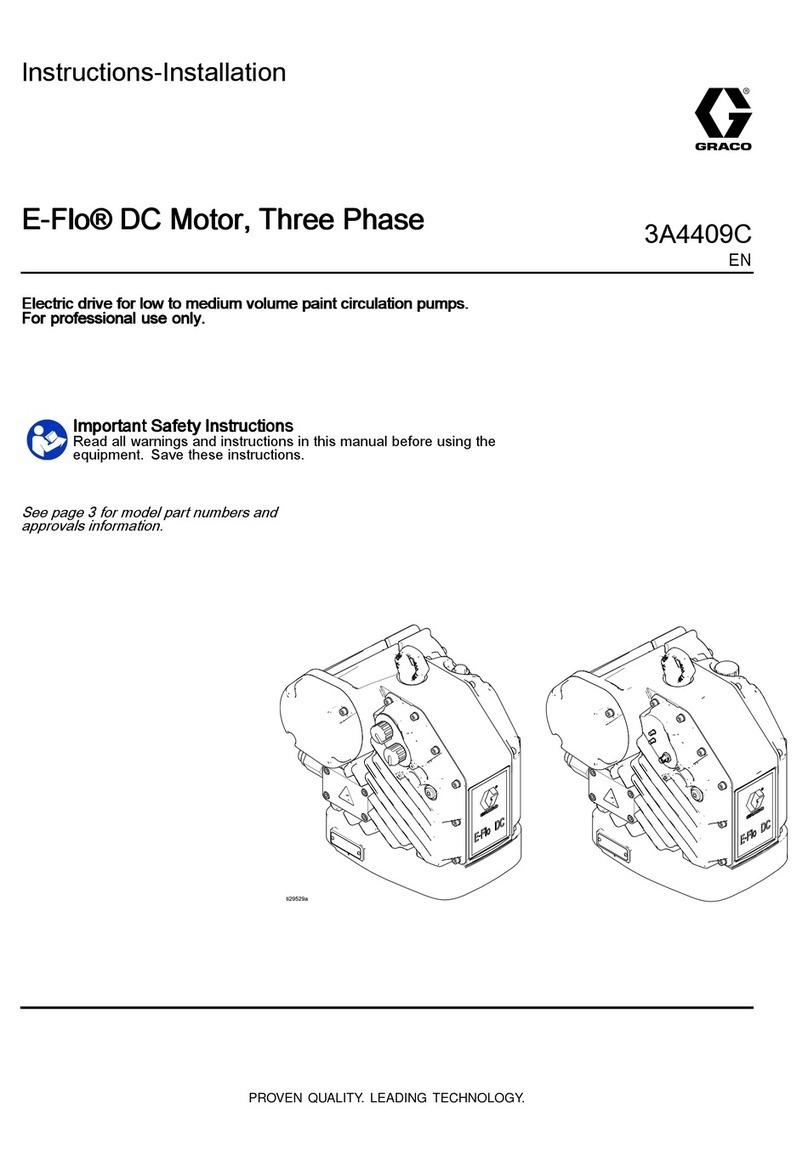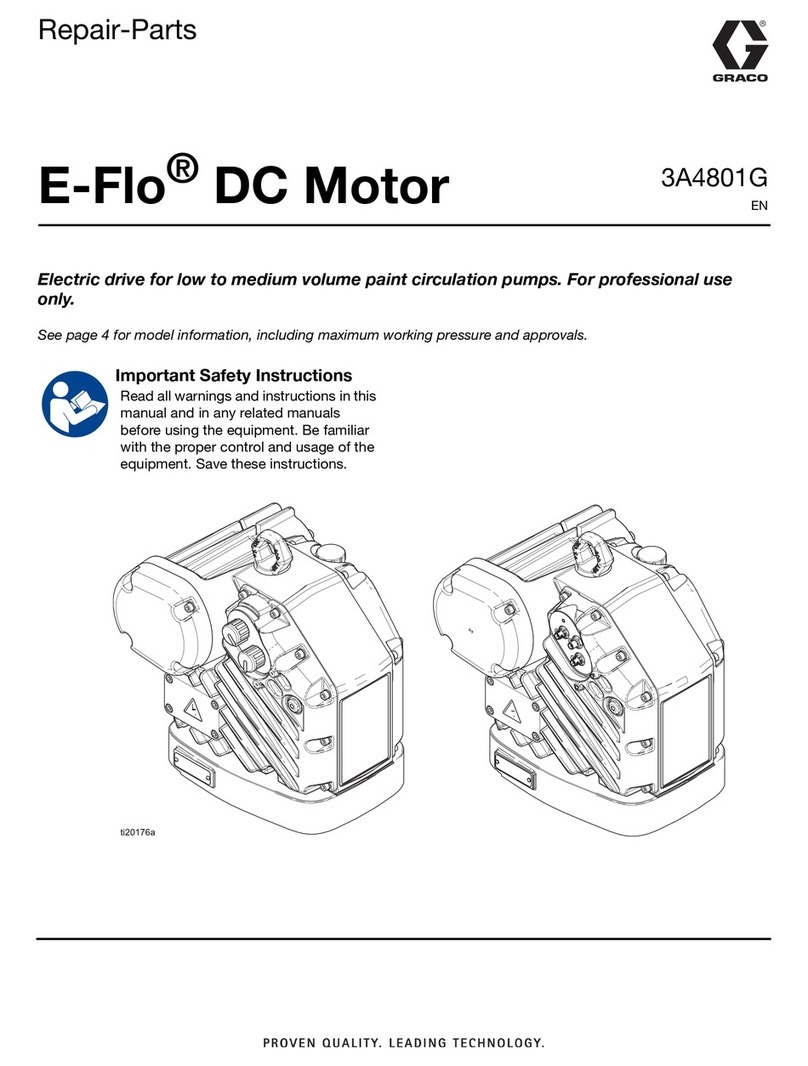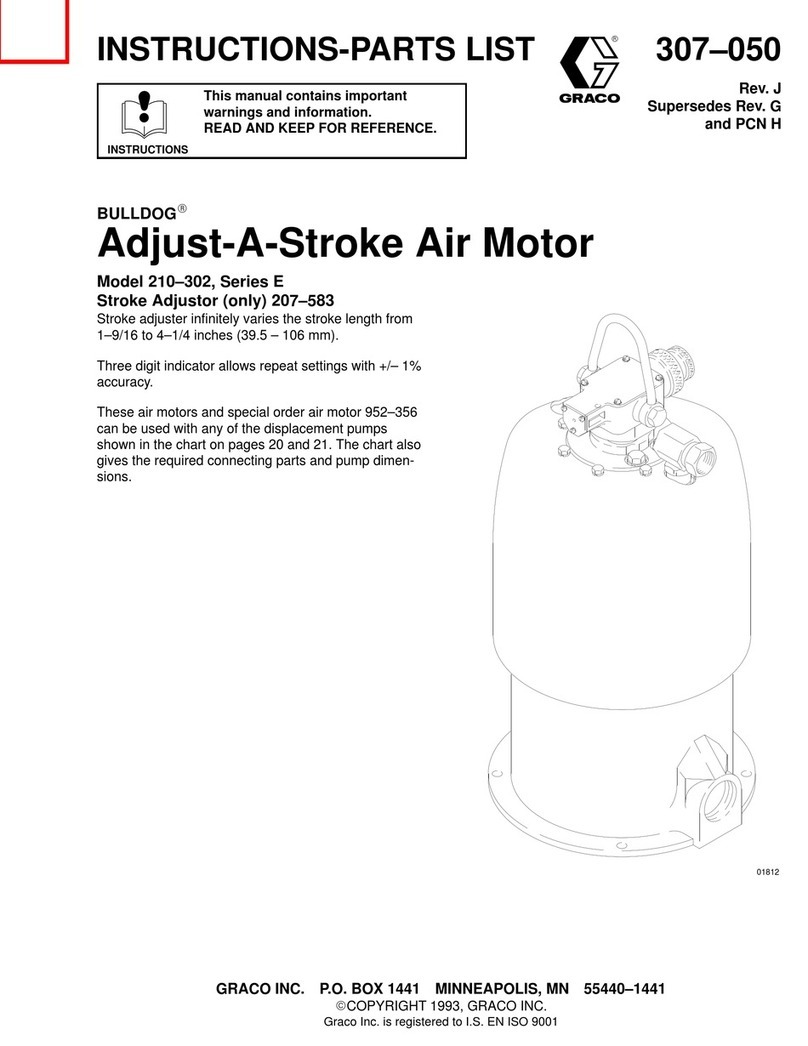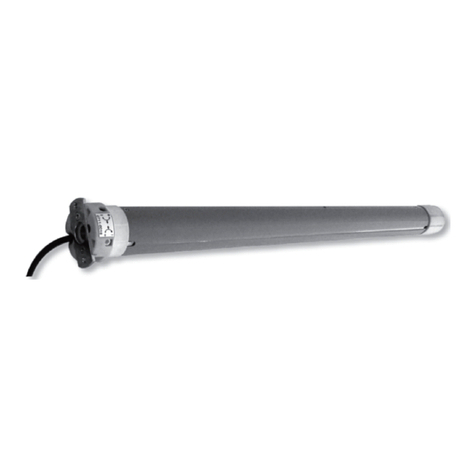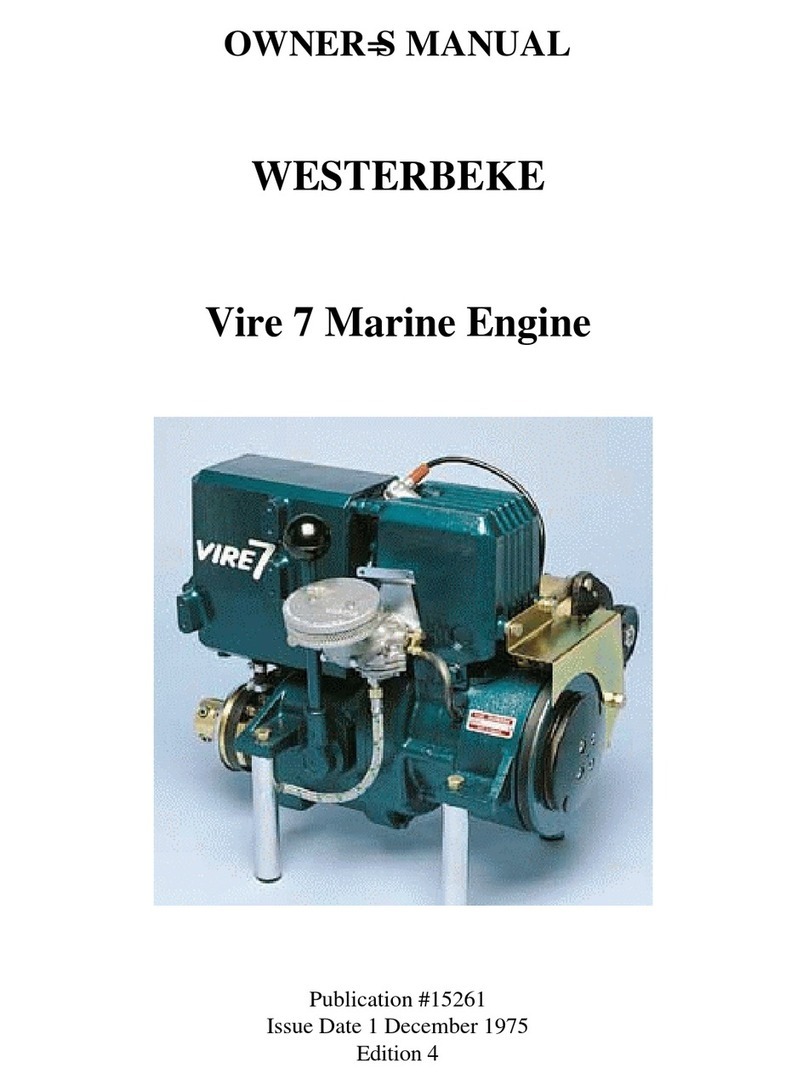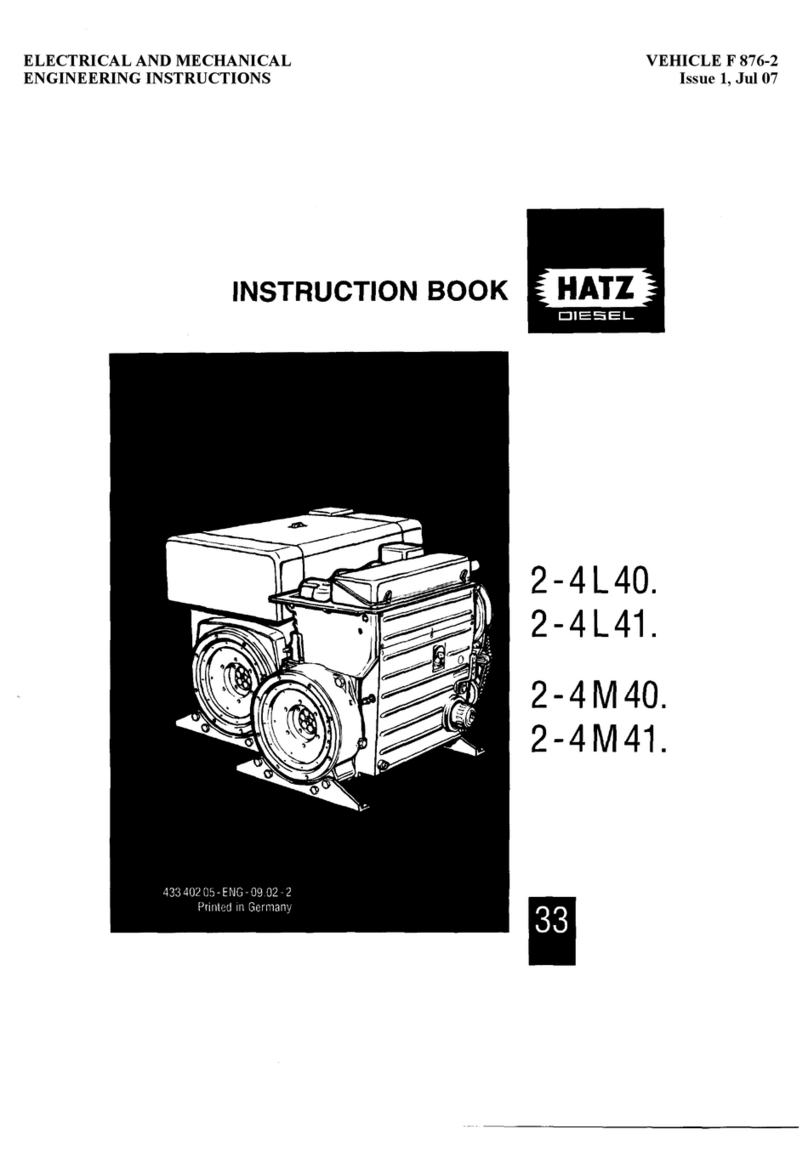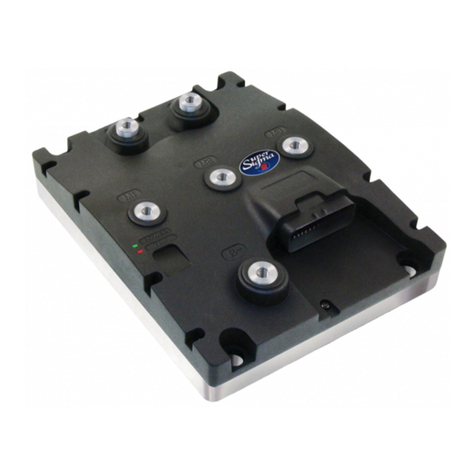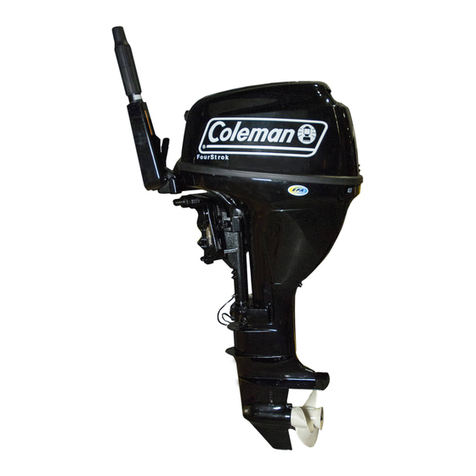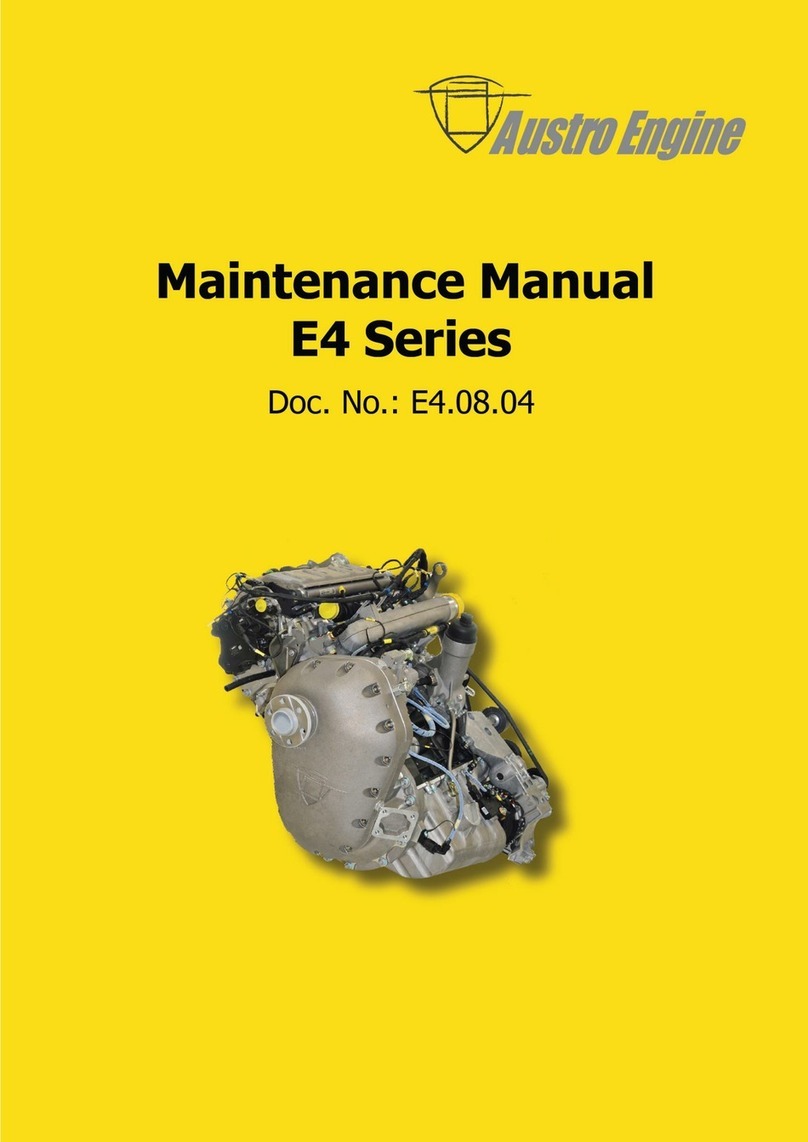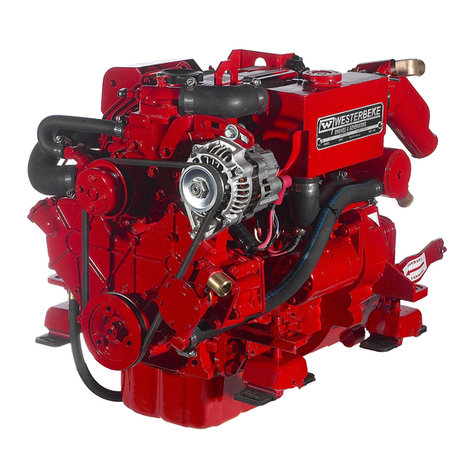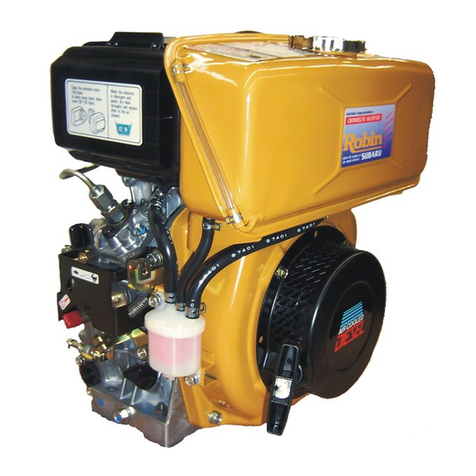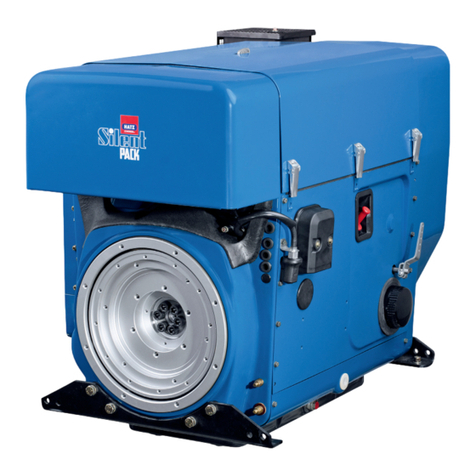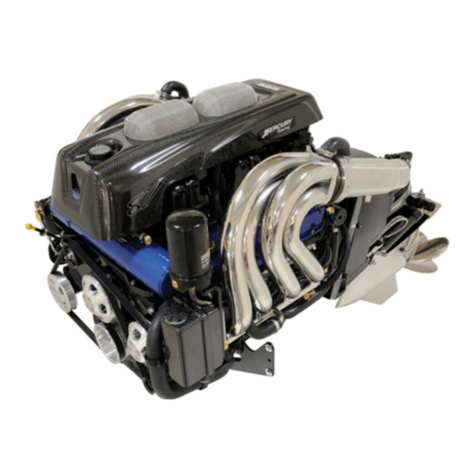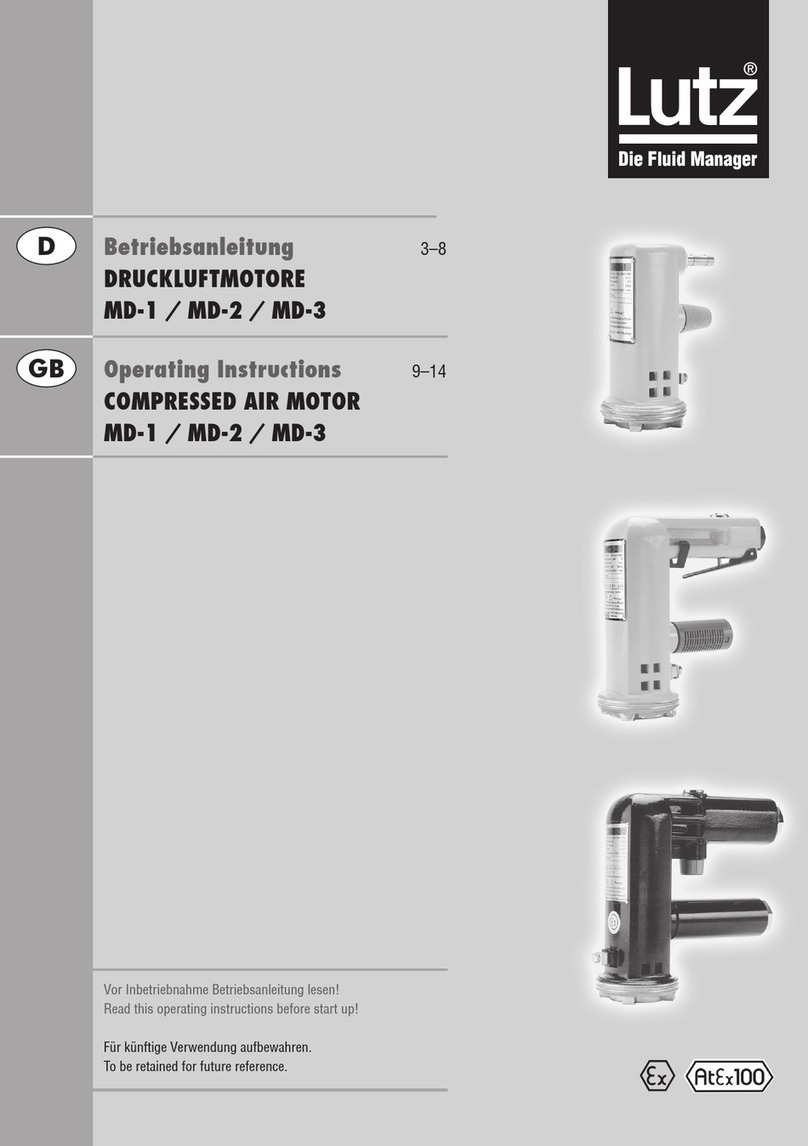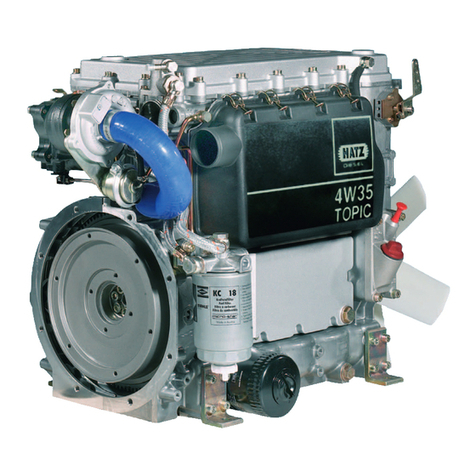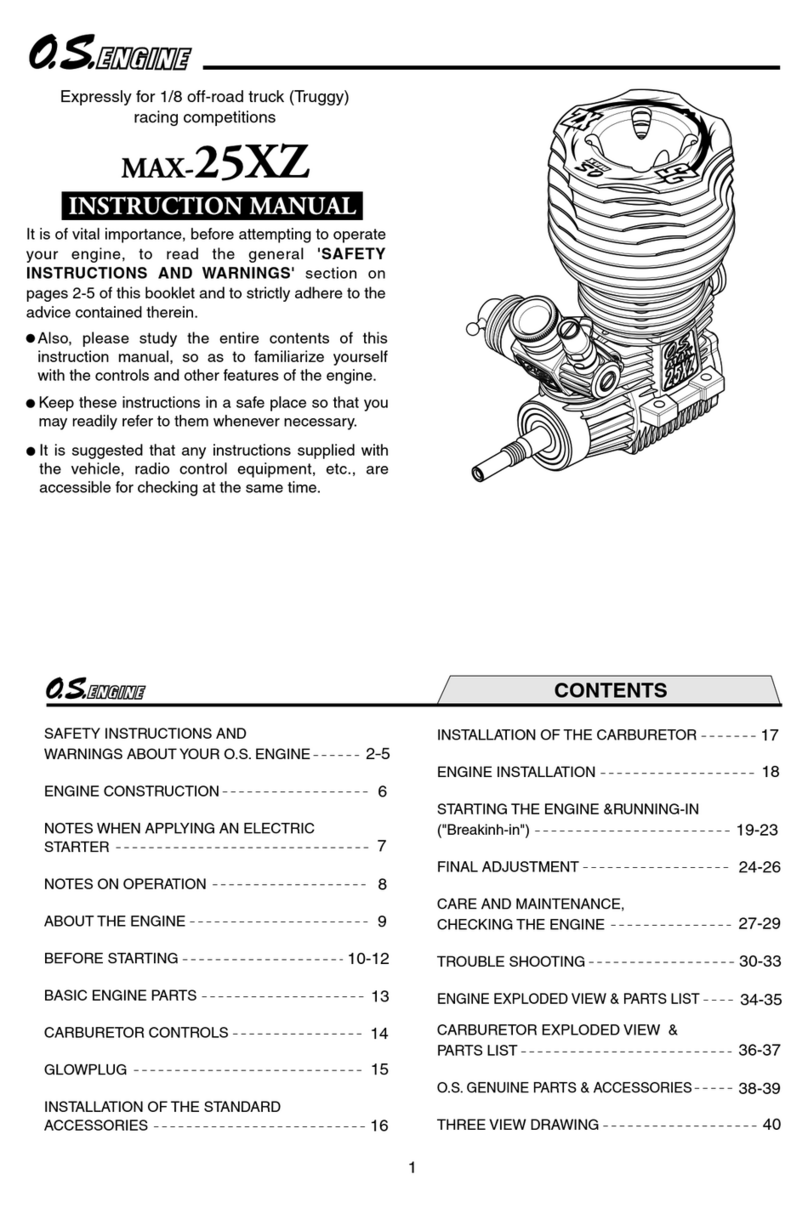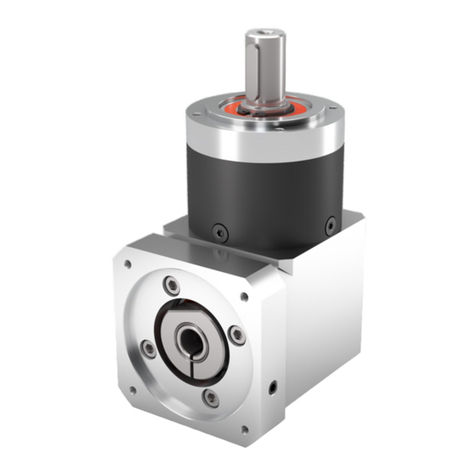
Service
13. Check the bearing (T
, see Fig. 3) in the air motor
base for wear
. If wear is excessive, replace the
base (61).
14. T
o inspect the trip rod (63), unscrew the piston rod
(42) from the tube of the piston (64). Use a wrench
on the turned down end (R) of the tube. Remove
the trip rod, being careful not to damage the pol
-
ished surface of the tube. Refer to Fig. 7. Inspect
the trip rod carefully; if the spring is broken or the
rod is damaged, replace the rod. Be sure to check
the spring guides for deformed edges or cracks.
Do not attempt to repair the rod or adjust the
spring.
CAUTION
Handle the trip rod assembly (63) carefully
.
Scratches or nicks will cause early spring failure.
02962
Fig. 7
64
R
63
42
2Apply
Loctite
r
242 or
equivalent and torque
to 200–220 N
Sm
(147–162 ft–lb).
1
1
Lubricate with light
waterproof grease.
2
3
Check spring guides
for
deformed edges or
cracks.
3
Reassembly
1. When
replacing the trip rod assembly (63), lubri
-
cate the spring and rod with light waterproof
grease. See Fig. 7. Clean the threads of the piston
tube (64), then slide the trip rod into the tube.
Apply Loctite
R
242 or equivalent to the threads of
the piston rod (42) and screw it into the piston
tube. T
orque to 200–220 N
Sm
(147–162 ft-lb).
2.
Pack light, waterproof grease into the wiper cavity
and the throat cavity
. Install the wiper (16*). Thor
-
oughly lubricate the new packing. Carefully tuck a
new backup (37) and v-packing (33*) into the
throat cavity
. The lips of the v-packing must face
up toward the piston. See Fig. 3.
3.
Place the cylinder (27) upside down on a flat
surface. Grease the inside walls of the cylinder
,
the piston (64), and the piston o-ring (17*). Install
the o-ring on the piston; the o-ring is larger than
the piston groove. Push the piston into the cylinder
so the excess of the o-ring fits into one of the
channels in the cylinder
. Use your fingers to push
the excess o-ring into the groove, and push the
piston further into the cylinder
.
4.
Align the notches in the gasket (44) with the chan
-
nels in the cylinder (27). Install the cylinder and
piston (64) into the base (61). See Fig. 5.
5.
Install the lockwashers (65) and screws (14) in the
base (61) and torque to 34 N
S
m (25 ft-lb). Place
the gasket (48*) on the cylinder (27). See Fig. 5.
6.
Grease the backup washer (74) and
v-packing (32). Install the backup washer in the trip
rod bearing (5), then insert the v-packing with the
lips facing down, out of the bearing. Install the
gasket (75) on the bearing. Carefully thread the
bearing down over the trip rod (63) and screw it
into the cylinder (27), using a 1 in. deep well
socket wrench. Place the bumper (73) in the
recess at the top of the cylinder
, with the ribs
facing up. See Fig. 5.
7.
Install the trip rod bushing (45), air valve housing
(23), lockwasher (10), and nut (46) on the trip
rod (63). Hold the trip rod up with padded pliers.
Adjust the housing and nut until 1 mm (0.039 in) of
the trip rod projects. T
orque the nut to 28–34 N
Sm
(21–25 ft-lb). See Fig. 8.
CAUTION
T
ake special care to avoid damaging the plated
surface of the trip rod (63), which would restrict its
free movement. Special padded pliers Part No.
207–579, is available.




















